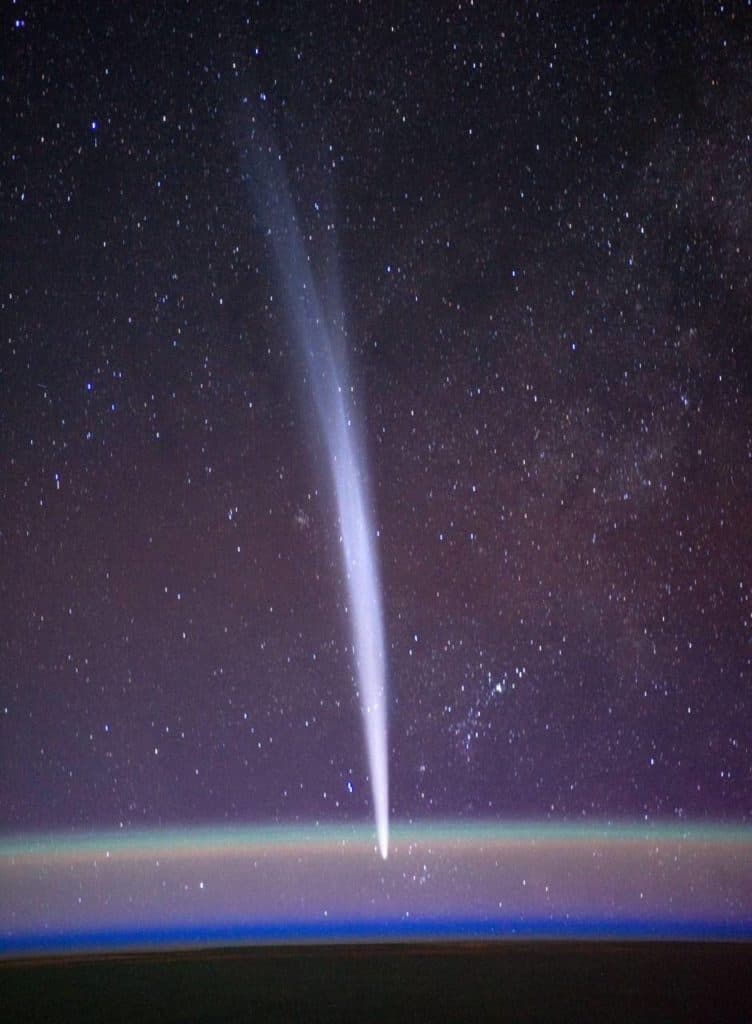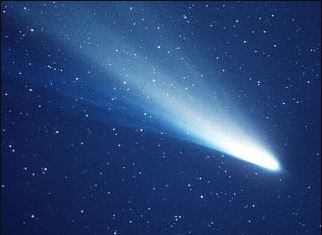Looking for fun activities to teach kids about the planet Comets?
This premium worksheet bundle contains a printable fact file and 10 fun and engaging worksheets to challenge your students and help them learn about Comets.
Comets are celestial objects made out of frozen gases, rock and dust that orbit the Sun. When frozen, they are the size of a small town. When a comet’s orbit brings it near the Sun, it heats up and spews dust and gases into a giant glowing head larger than most planets while the tail stretches away from the Sun for millions of miles.
Key Facts & Summary
- Comets, unlike other small bodies in the Solar System, have been known since antiquity.
- Ancient Chinese astronomers kept extensive records and illustrations about comets that have helped even modern astronomers in their studies and observations.
- The word “comet” comes from the Greek word “Kometes” which means long hair. This is because of how a comet’s tail can look like long flowing locks of hair.
- Come, just like asteroids, are leftovers from the formation of the Solar System. Scientists believe that these small bodies hold many clues as to how our Solar System came to be.
- Millions of comets orbit the Sun. They come from the Kuiper Belt and the Oort Cloud.
- These comet reservoirs are way out in the Solar System, very far away from the Sun. The Oort Cloud, for example, hasn’t even been directly observed even to this day.
- A comet spends most of its life either in the Kuiper Belt or the Oort Cloud. Sometimes, comets can crash into one another and this changes their direction, throwing them out towards the inner solar system.
- When a comet approaches the inner planets, it is warmed by the Sun. It begins to melt and throws out dust and gas. This creates a head and a tail. The tail always points away from the Sun.
- Sometimes, planets can travel through a comet's tail. When this happens, meteor showers occur on the respective planet.
- Many meteor showers on Earth are caused by comets, such as the Quadrantids, Lyrids, Perseids, Orionids, Leonids, or Geminids meteor showers.
Comets are beautiful, but in the distant past, they were also perceived as terrifying. Until the 16th century, comets were often considered bad omens such as the death of kings, coming catastrophes, or even interpreted as attacks by heavenly beings.
Now, we know more about them and how they work. Comets orbit the Sun just like the planets and asteroids do. However, comets usually have a very elongated orbit.

These highly eccentric elliptical orbits make them have a wide range of orbital periods, ranging from several years to potentially several millions of years, so watch closely the night sky as viewing any comet could be a once in a lifetime chance!
Structure and Classification
When a comet gets close to the Sun, some of the ice starts to melt and boil off, along with particles of dust. These particles and gases make a cloud around the nucleus, called a coma, which can extend between hundreds to thousands of km. The nucleus is the solid core structure of a comet, no larger than a few km, and it is composed out of rock, dust, water ice, and frozen carbon dioxide, monoxide, methane, and ammonia.

The coma is lit by the Sun, and the stream of materials released is generally made of water which makes for 90% of the volatiles that outflow from the nucleus when the comet is within 3 to 4 AU of the Sun. The sunlight also pushes this material into an amazingly bright-lit tail of the comet.
A comet’s tail can extend up to several million kilometers/miles, and it is the most prominent part of a comet to the unaided eye.
Comets have been classified into two distinct categories:
- Short-period comets – which are called ecliptic comets.
- Long-period comets – which are called nearly isotropic comets.
One AU is the distance between Earth and the Sun. Short-period comets have relatively small orbits, usually below 10 AU. They follow the ecliptic plane, which is where the planets lie.

Long-period comets have huge orbits that can reach thousands of AU, taking them far beyond the orbit of the dwarf planet Pluto. They also appear from any given point in the sky and are very unpredictable.
Formation
Comets are leftovers from the birth of the Solar System that occurred around 4.6 billion years ago. They consist mostly of ice coated with dark organic material. Many refer to them as “dirty snowballs.”
These small celestial objects hold many important clues and information on our Solar System. Comets may have brought water and organic compounds, the building blocks life, to the early Earth and other parts of the Solar System.
Origin
Where do comets come from? Well, there are two answers to this question. Comets come from both the Kuiper Belt and the Oort Cloud.
Short-period comets, that take around 200 years to orbit the Sun, come from the Kuiper Belt. The belt is located beyond Neptune, and it is full of icy bodies that are occasionally pushed by gravity into orbits that bring them closer to the Sun.

The long-period comets come from the Oort cloud, and it takes several million years for some of them to orbit the Sun. The Oort Cloud is located at around 100,000 AU away from the Sun.
Comets usually travel at a safe distance from the Sun. The famous comet Halley, for example, comes no closer than 89 million km / 55 million mi. However, some comets, called sungrazers, crash straight into the Sun or get so close that they break up and evaporate.

Fun Facts:
- Comets actually have two tails, a gas tail, and an ion (gas) tail.
- As of 2019, there are 6,619 known comets. This number is constantly increasing, and it only represents a fraction of how many there are.
- In the Oort Cloud, there are around 1 trillion estimated comets.
- The famous Halley comet is visible once every 75 or 76 years. It is responsible for the Orionid meteor shower that occurs in October. The last time it made its appearance was in 1986.
- Many believe that Chicxulub, the celestial body that caused the exaction of the diosaurs around 66 million years ago, was either an asteroid or comet.
Trivia
How comets get their names
Comets are named after their discoverer, either a person or a spacecraft. This guideline was developed only in the last century. For example, the comet Shoemaker-Levy 9 was named as such because it was the ninth short-periodic comet discovered by Eugene Carolyn Shoemaker and David Levy.

The jewel of amateur astronomers
Nothing is more exciting for amateur astronomers than to observe something which wasn’t observed by anyone else. In this case, comets are somehow the jewel for amateur astronomers since they are so many, usually dim, and hard to spot. However, many amateur astronomers managed to capture many comets in action.

Did you know?
- The appearance of a comet is called an apparition.
- There is at least one comet visible to the naked eye passing every year near Earth. However, these comets aren’t very bright, especially when compared to comets such as Halley’s.
- Many periodic comets are now termed lost comets since their orbits were never known well enough to predict future appearances.
Sources:
Image sources:
- https://upload.wikimedia.org/wikipedia/commons/1/1f/Iss030e015472_Edit.jpg
- https://www.esa.int/var/esa/storage/images/esa_multimedia/images/2002/12/structure_of_a_comet/9185850-5-eng-GB/Structure_of_a_comet_article.gif
- https://images.slideplayer.com/26/8450191/slides/slide_2.jpg
- https://solarsystem.nasa.gov/internal_resources/3253/
- https://www.universetoday.com/wp-content/uploads/2011/02/oort-cloud-nasa-1280x720.jpg
- https://cdn.mos.cms.futurecdn.net/zzCKzkAndgXbTKNoKCUqu9-320-80.jpg
- https://en.wikipedia.org/wiki/Comet#/media/File:17pHolmes_071104_eder_vga.jpg

